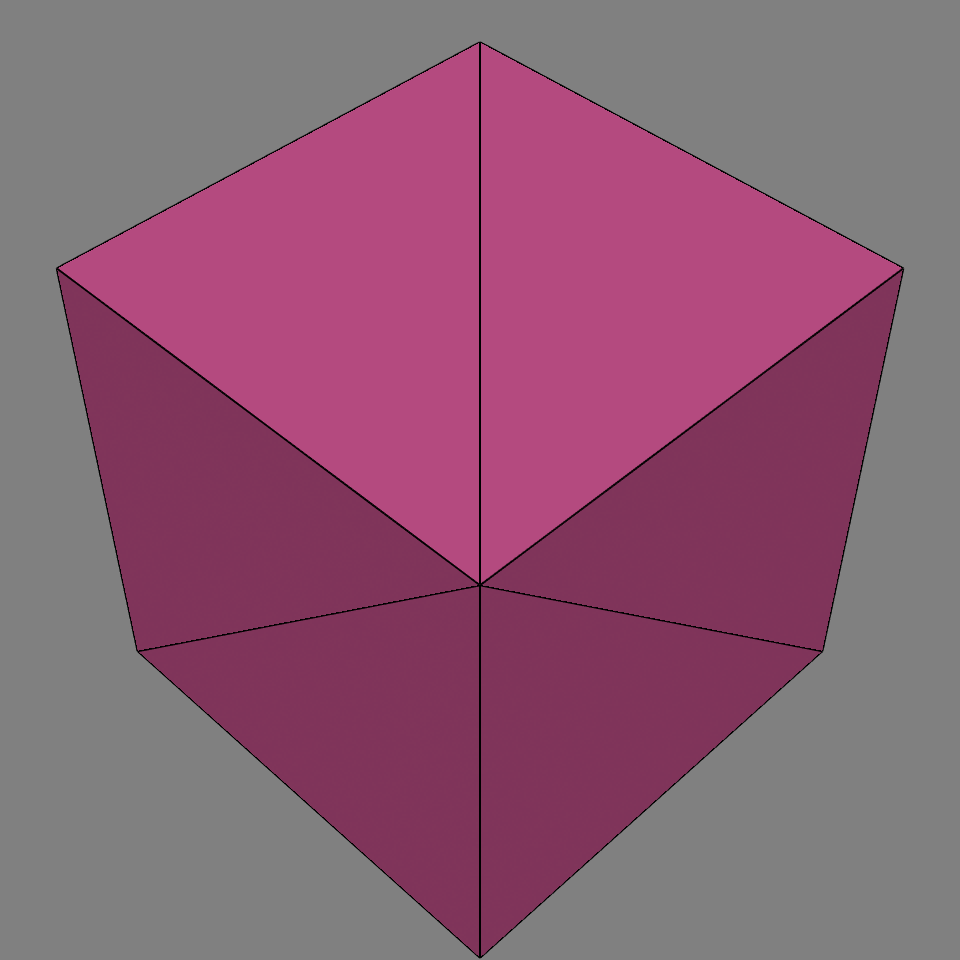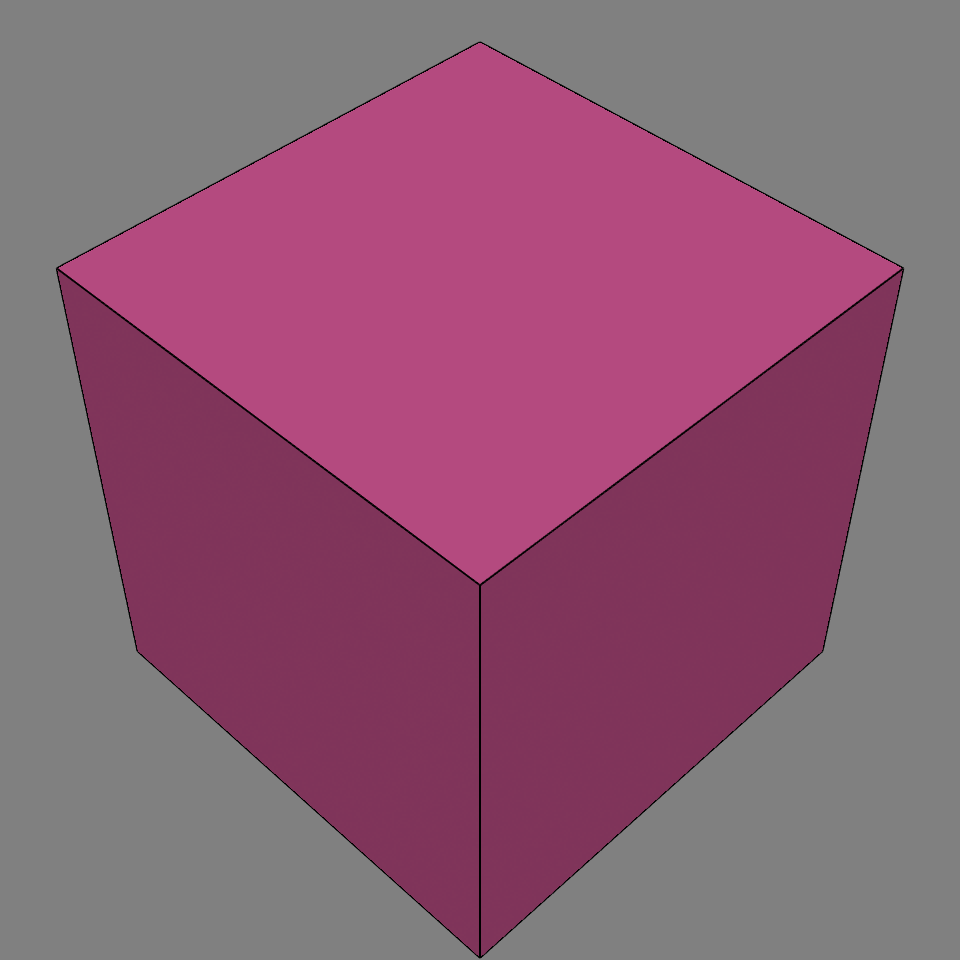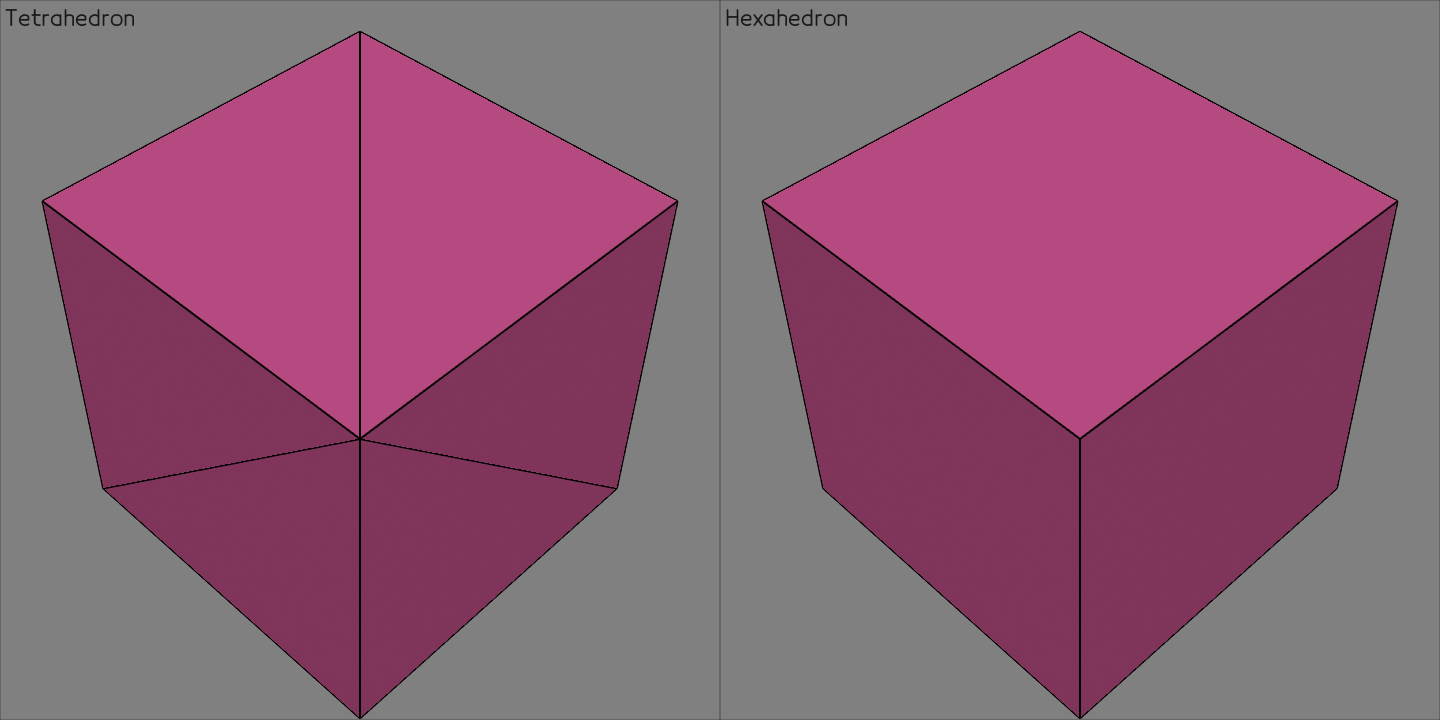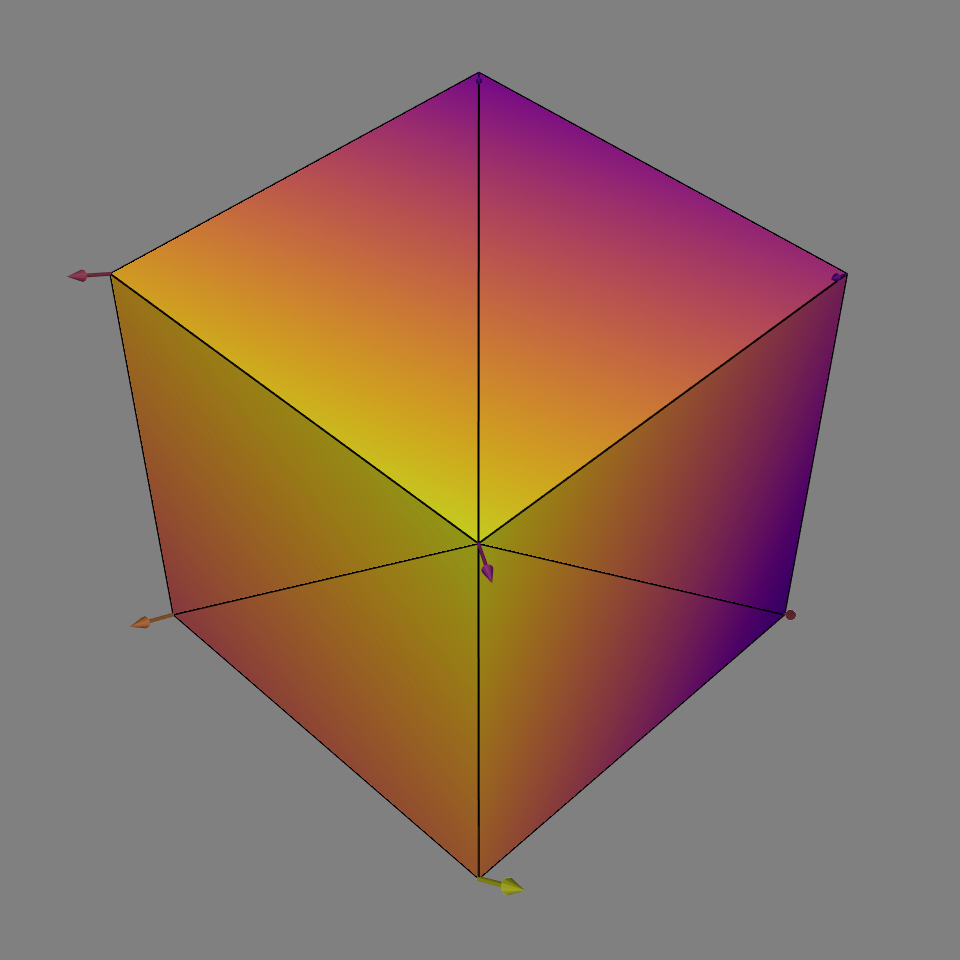gustaf is a Python library to process and visualize numerical-analysis-geometries; gustaf currently supports the following elements:
- points,
- lines,
- triangle,
- quadrilateral,
- tetrahedron, and
- hexahedron.
gustaf only has numpy for its strict dependency. The minimal version can be installed using pip.
pip install gustaf
To install all the optional dependencies at the same time, you can use:
# quotation marks required for some shells
pip install "gustaf[all]"
For the latest develop version of gustaf:
pip install git+https://github.com/tataratat/gustaf.git@main
This example shows how to create volume elements and plot data on them. For visualization, gustaf uses vedo as main backend.
To begin we need to import the needed libraries:
import gustaf as gus
import numpy as npNow we create our first volume. It will be just a basic cube. Even here we can
already choose between using a tetrahedron and a hexahedron-based
mesh. The Volumes class will use tetrahedrons if the volumes keyword is made
up of a list of 4 elements (defining the corners of the tetrahedron), if 8
elements are in each list hexahedrons are used (defining the corners of the hexahedron in the correct order).
# create tetrahedron mesh using Volumes
# it requires vertices and connectivity info, volumes
tet = gus.Volumes(
vertices=[
[0.0, 0.0, 0.0],
[1.0, 0.0, 0.0],
[0.0, 1.0, 0.0],
[1.0, 1.0, 0.0],
[0.0, 0.0, 1.0],
[1.0, 0.0, 1.0],
[0.0, 1.0, 1.0],
[1.0, 1.0, 1.0],
],
volumes=[
[0, 2, 7, 3],
[0, 2, 6, 7],
[0, 6, 4, 7],
[5, 0, 4, 7],
[5, 0, 7, 1],
[7, 0, 3, 1],
],
)
# set line color and width
tet.show_options["lc"] = "black"
tet.show_options["lw"] = 4
tet.show(background="grey")hexa = gus.Volumes(
vertices=[
[0.0, 0.0, 0.0], #0
[1.0, 0.0, 0.0], #1
[0.0, 1.0, 0.0],
[1.0, 1.0, 0.0], #3
[0.0, 0.0, 1.0],
[1.0, 0.0, 1.0],
[0.0, 1.0, 1.0], #6
[1.0, 1.0, 1.0],
],
volumes=[
[0, 1, 3, 2, 4, 5, 7, 6],
],
)
hexa.show_options["lc"] = "black"
hexa.show_options["lw"] = 4
hexa.show(background="grey")As just shown, it is really easy to show the objects by just calling the
show() function on the object. But that is just the beginning of the
possibilities in vedo. You can plot multiple objects next to each other:
# show multiple items in one plot
# each list will be put into a separate subplot.
gus.show(
["Tetrahedron", tet],
["Hexahedron", hexa]
)Now let's add a color map to the object for the norm of the coordinate, and let us also add at each vertex an arrow with random direction and length.
# let's visualize some scalar data and vector data defined on vertices
tet.vertex_data["arange"] = np.arange(len(tet.vertices)) # scalar
tet.show_options["data"] = "arange"
tet.vertex_data["random"] = np.random.random((len(tet.vertices), 3)) # vector
tet.show_options["arrow_data"] = "random"
tet.show(background="grey")Are you interested in splines? Please checkout splinepy!
| Package | Description |
|---|---|
| numpy | Fast array data operations. |
| vedo | Default renderer / visualization core of gustaf. |
| scipy | Create k-d trees and simple rotation matrices. |
| napf | Fast k-d tree build / query based on nanoflann. Supersedes scipy if it is importable. |
| funi | A different method to find unique float array rows. But faster than k-d trees! |
| meshio | Supports loading/exporting numerous mesh formats. |




